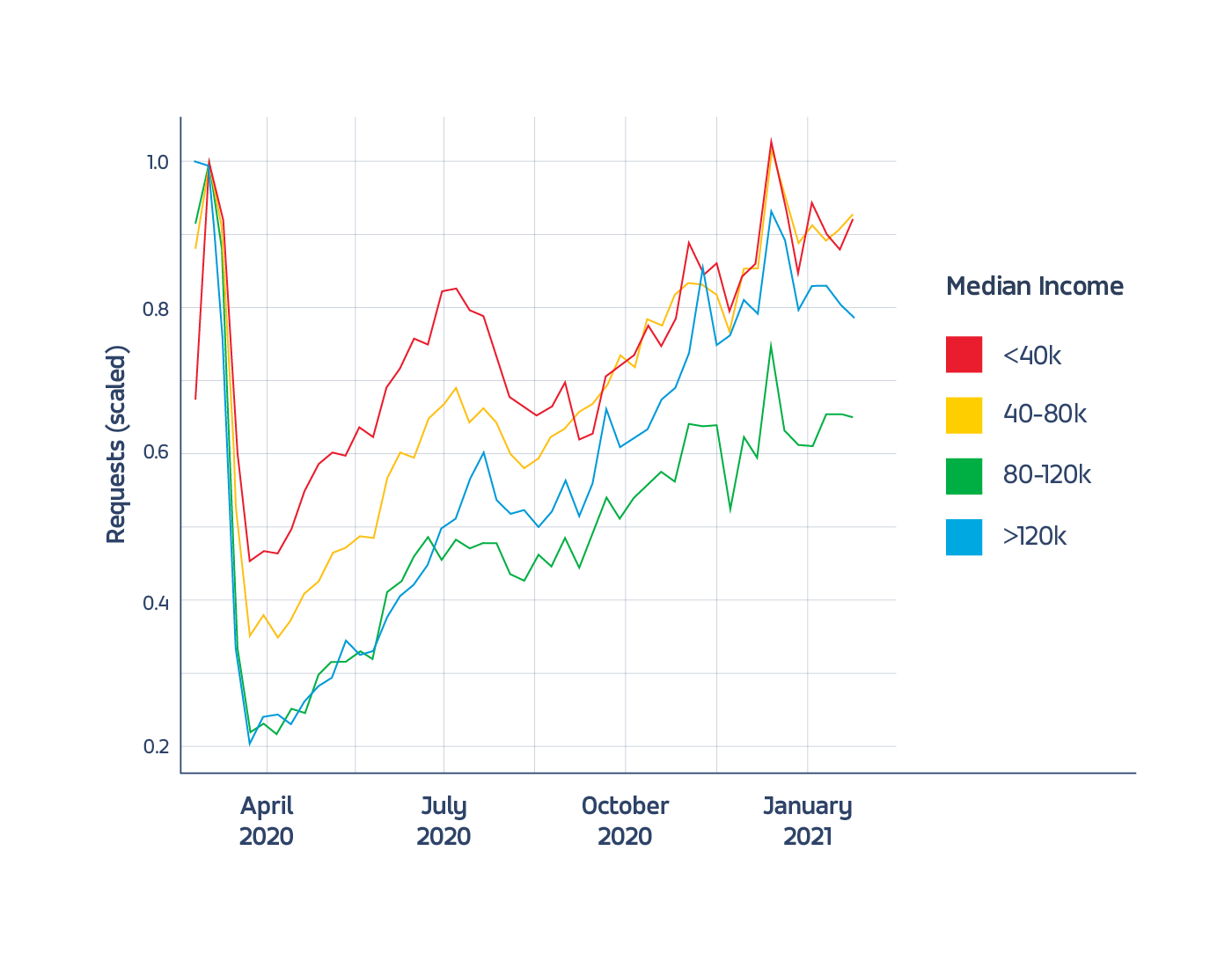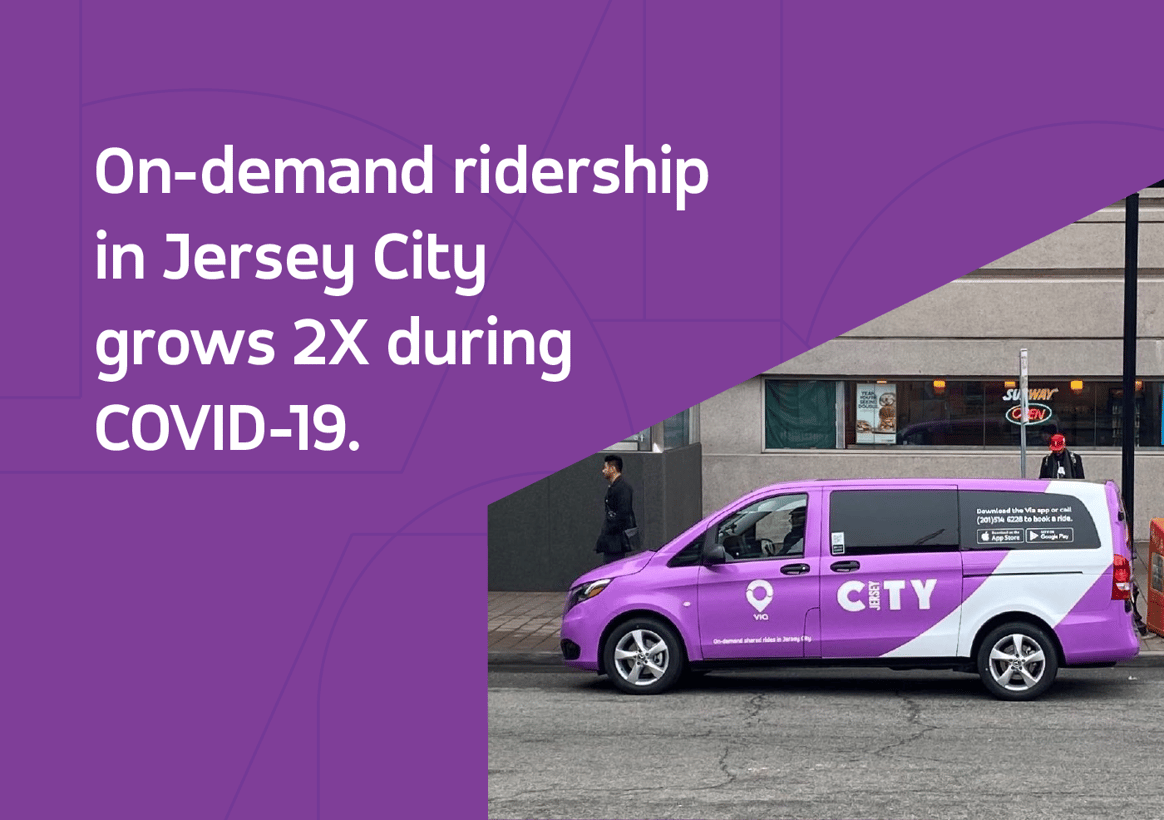Need a primer on some of the terms used below? Check out our new glossary for all of the TransitTech definitions you could ever need -- and then some.
Access to affordable and reliable transportation options remains one of the key social determinants of economic mobility in cities across the US — and Jersey City is no exception. While transit in the Downtown area is plentiful, the North and South regions of the city long suffered from insufficient public transit and lack connections to the major transportation hubs located just a few miles away.
To address this inequity, Jersey City Mayor Steven Fulop partnered with Via in late February 2020 to launch New Jersey’s first on-demand transit service, purpose-built to both complement existing public transportation and fill gaps in underserved areas.

Shortly following the launch, day-to-day life hit a painful pause due to the pandemic. But while many sheltered in place, essential workers still needed to travel every day to stock grocery store shelves, clean hospitals and clinics, and care for the elderly. Frontline workers do not have the luxury of working from home, and they also overwhelmingly rely on public transit to get to and from the work that has kept communities running throughout the global crisis.
So it makes sense that, after the initial lockdowns in March, ridership for Via’s on-demand deployments across the US rebounded fastest in low-income and working-class neighborhoods.
In Jersey City, riders in lower income areas were not nearly as quick to move away from the on-demand service during COVID-19. Even with the state’s stay at home order in place from March until June, trip requests from lower-income neighborhoods came back at a stable rate, and the service provided more than 65,000 rides in its first five months.  Recent data from passenger surveys show that Jersey City continues to deliver on its goal of serving low-income residents: The majority of on-demand riders make less than $50,000 a year. Riders in lower-income areas of the city continue to rely heavily on the microtransit service in a way riders in higher-income brackets — with greater rates of car ownership and remote work opportunities — simply don’t.
Recent data from passenger surveys show that Jersey City continues to deliver on its goal of serving low-income residents: The majority of on-demand riders make less than $50,000 a year. Riders in lower-income areas of the city continue to rely heavily on the microtransit service in a way riders in higher-income brackets — with greater rates of car ownership and remote work opportunities — simply don’t.  Rider data also shows that the Via service continues to provide an affordable and direct alternative to single-occupancy vehicles or private rideshare and taxis. In fact, 41% of riders surveyed said they would have used private vehicles if Via on-demand transit was not available in Jersey City. Today, ridership is more than double what it was prior to the pandemic. The past year has underscored the importance of public transportation as a lifeline for many Americans and transit will be one of the most important catalysts for revitalizing economic activity in communities big and small. Jersey City is just one example of the positive socioeconomic impact on-demand transit can have when it is built to serve those most in need.
Rider data also shows that the Via service continues to provide an affordable and direct alternative to single-occupancy vehicles or private rideshare and taxis. In fact, 41% of riders surveyed said they would have used private vehicles if Via on-demand transit was not available in Jersey City. Today, ridership is more than double what it was prior to the pandemic. The past year has underscored the importance of public transportation as a lifeline for many Americans and transit will be one of the most important catalysts for revitalizing economic activity in communities big and small. Jersey City is just one example of the positive socioeconomic impact on-demand transit can have when it is built to serve those most in need.




